Vector functions [10.1]
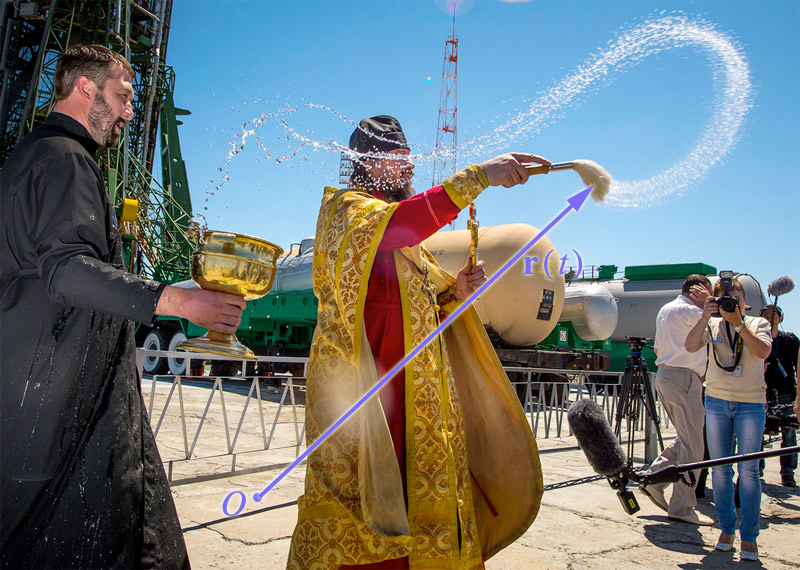
Blessing of the media, Soyuz launch 2013 [NASA]
The position of an object in
3-d, as a function of time,
$\myv r(t)$ is an example of a vector function.
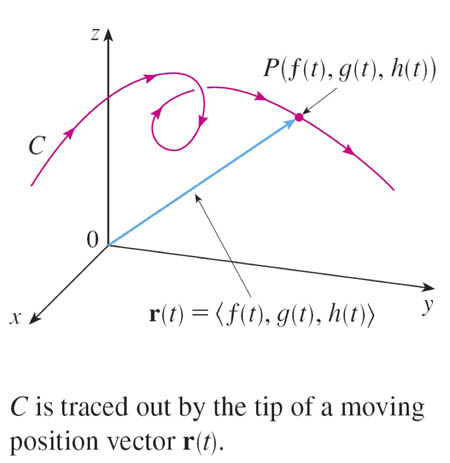
Vector functions and parametric equations
Consider the 2-d vector function: $$\myv r(t)=\langle t,t^2\rangle$$
- $\myv r(t)=\langle t,t^2 \rangle$
- $x(t)=t;\ \ \ y(t)=t^2$
- In this case we can write $y$ as a function of $x=t$: $$\nonumber y=x^2$$ and we know what that looks like...
- Mathematica: use ParametricPlot (2-d) and ParametricPlot3d:
ParametricPlot[{t, t^2}, {t, 0, 3}]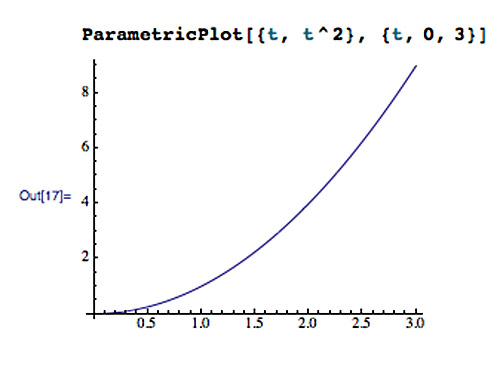
Plotting curves
...from discrete segments. For example:
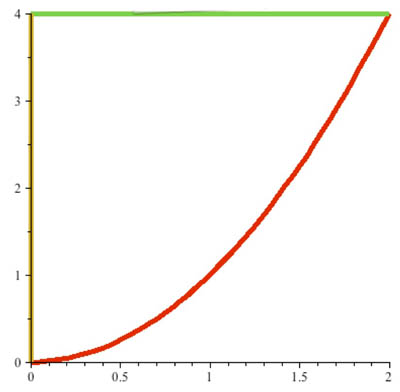
In Mathematica:
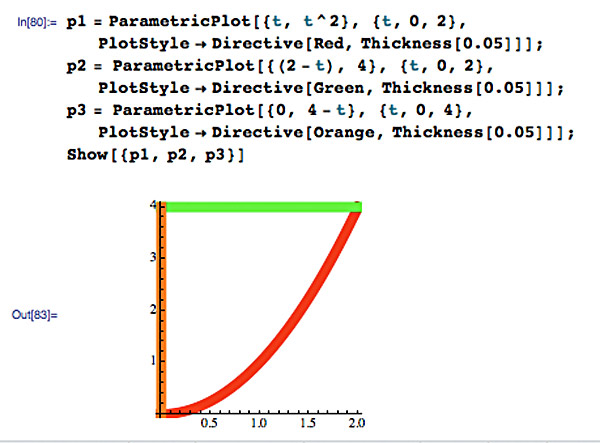
Your turn
...to write parametric expressions to produce these paths:
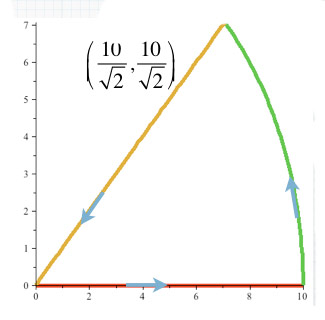
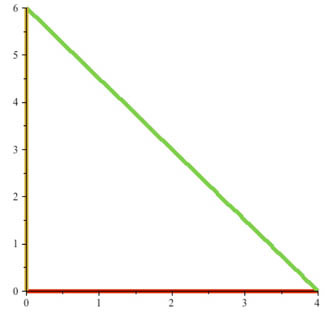
For the segment-of-a-circle: Think of the polar coordinate representation of a circle, in which the radius, $r$, is constant, as the angle, $\theta$, varies. Now, use the transformations of $r,\theta \to x(r,\theta), y(r,\theta)$ to find an expression in Cartesian coordinates for a circle in terms of the constant radius, and the changing (*parameter*) $\theta$.
3-d example
$$\myv r(t)=\langle 1+t, 2+5t, -1+6t \rangle\nonumber$$
- $x(t)=1+t$
- $y(t)=2+5t$
- $z(t)=-1+6t$
ParametricPlot3D[{1+t,2+5*t,-1+6*t},{t,0,10}]
Using 3-d surfaces
...to graph and visualize vector equations.
Consider: $$\myv r(t)=\langle \cos t, \sin t, t\rangle\nonumber$$
- $\cos^2 t + \sin^2 t = x^2+y^2=1$.
- In 2-d this is the equation of points on a circle of radius 1.
- So in 3-d, the path traced out by $\myv r(t)$ must lie on the surface of the cylinder $x^2+y^2=1$
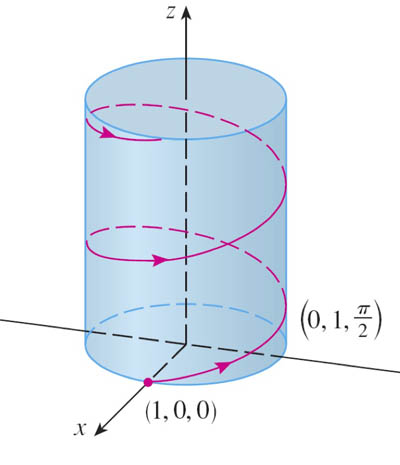
This process of ignoring one coordinate, and seeing how 2 of the coordinates relate to each other without regard to the other one is like "projection". Doing this with the other coordinate pairs, we see the familiar-looking relations: $$\nonumber x=\cos z;\ \ \ y=\sin z$$
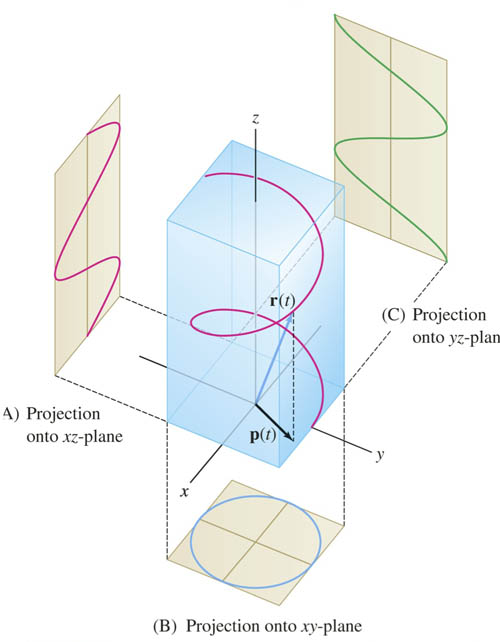
Intersections and projections
Consider $$\myv r(t)=\langle t,t^2,t^3 \rangle \nonumber$$
Since $y(t)=t^2$ and $x(t)=t$ we can combine these equations to get $$\nonumber y=x^2.$$
And similarly $$\nonumber z=x^3,$$ so we could plot the 3-d surfaces
- $y=x^2$ (for any $z$), and
- $z=x^3$ (for any $y$)
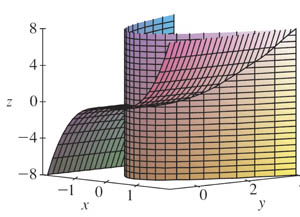 The points in $\myv r$ need to be on *both* of those surfaces, so we could look for $\myv r$ as the intersection of the surfaces.
The points in $\myv r$ need to be on *both* of those surfaces, so we could look for $\myv r$ as the intersection of the surfaces.
Traces of $\langle t,t^2,t^3 \rangle$
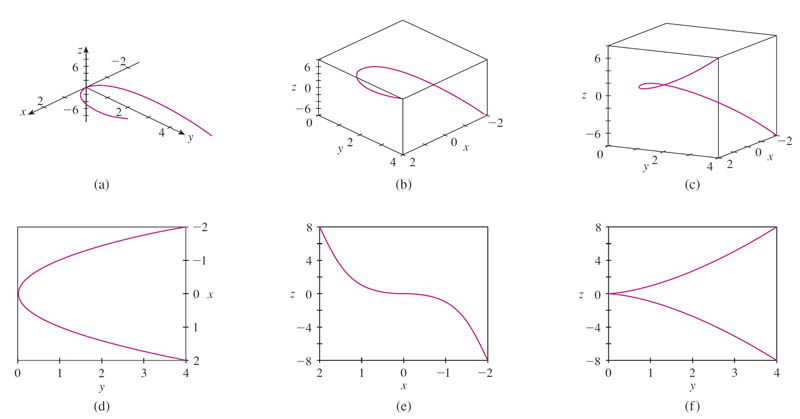
To Do
- Handout: Projections